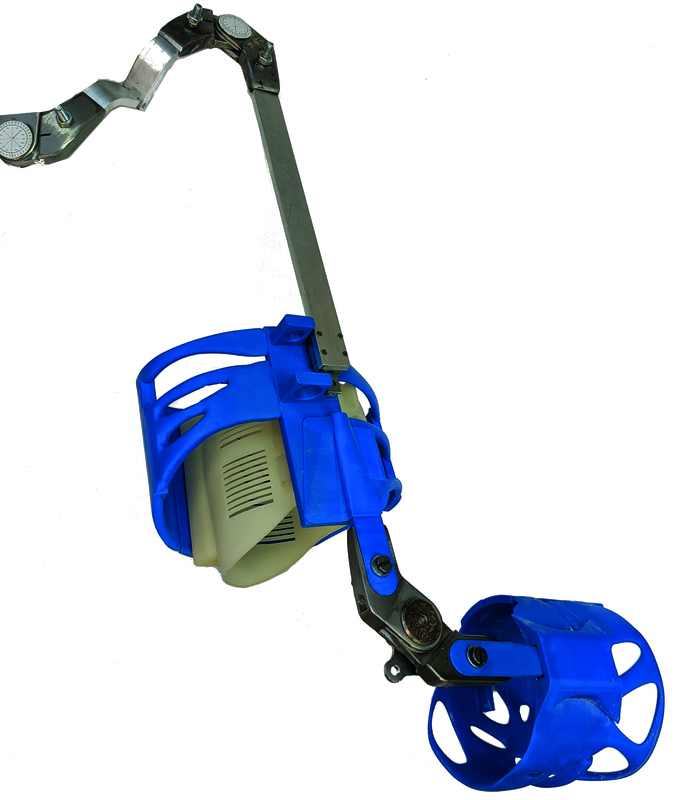A Wearable RobotExoskelett at Aalen University should ease physical work

When the frame is attached to the arm, the blue outer shell draws power from the motor and sends it to the beige padding.
A wearable robot, attached to the body? It may sound like science fiction, but has already been enthusiastically applied in production. Because the so-called Exoskelett helps ease heavy loads and prevents posture problems that can occur with heavy physical labour. A research team at the robotics laboratory at Aalen University is working on the Exoskelett LeviAktor, which helps relieve physical strain with the help of motorized arms and shoulders.
What looks like Iron Man’s suit from the Marvel movies is actually an orthopedic tool for people who work in physically straining jobs. Physically incorrect loading like heavy lifting and carrying can lead to problems in the muscle or skeletal system. According to the Federal Institute for Occupational Safety and Health (BAuA), muscular and skeletal disorders are the main cause of inability to work and occupational disability in Germany.
Current from the Nerves
Motorizing the Exoskelett is very difficult in terms of mechanics and the control system. The engineers of the robotics laboratory at Aalen University, under the direction of Prof. Dr. Matthias Haag, along with the Bavarian company Gottinger Orthopedic Technology, are developing a solution. „The shoulder piece and the interface are central aspects, like a standardized drive system“, explains Christian Kallwass, a scientific researcher. The engineer is responsible for the power transfer and lightweight design optimization, among other things. Controlling the Exoskelett should occur via the current that results when moving one’s arms. „Our goal with LeviAktor os to find a good compromise between the price and individualization of the product”, says Haag.
Fitting for Different Body Types
The mechanical components are also demanding. Developing the shoulder pieces must ensure above all, that the wearer’s mobility is not hampered. For that, the researchers have integrated four joints into a frame, that imitate the flexibility of shoulders. The project uses tracks, so that people with different body types can use the same frame, where the wearer can set their height. “When attaching the frame to the arm, we developed a two-part system made up of an outer shell and soft padding,” explains Kallwass. The blue outer shell will be produced in three standard sizes. They draw power from the motor and sends it to the padding. The soft padding fits the form of the arm, and will be individually produced for each person, so that it’s as comfortable to wear as possible.
The project is funded by the Federal Ministry for Education and Research. In the next steps, scientists are going to choose a fitting drive system and how to attach it to the joints and the Exoskelett.
